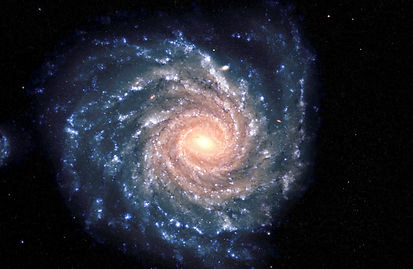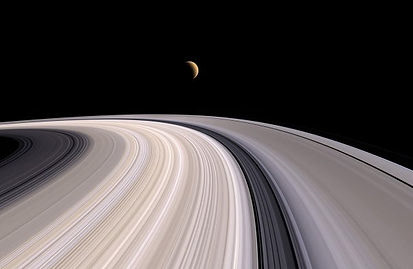EDUCATOR GUIDE
LESSONS, EXPERIMENTS, ACTIVITIES
Learning About Space Exploration
The In Saturn’s Rings Educator Guide is appropriate for all intermediate grades (4 to 8) and most useful when used as a companion to the film, but also valuable as a resource on its own.
Teachers are encouraged to adapt activities included in this guide to meet the specific needs of the grades they teach and their students.
In Saturn’s Rings makes a great classroom field trip as it engages students on multiple levels – from the beauty of our universe to the uniqueness of our Earth.
This guide offers hands-on lessons, experiments, and observational activities designed to educate students about space exploration, environmental concerns on Earth, as well as digital photography.
Each activity includes ideas for implementing the lessons, expansion activities, and additional learning resources.
Download individual activities or worksheets from our Educator Guide
Lesson One: Solar System Walk
Lesson Two: Saturn By Numbers
Lesson Three: Making Craters
Lesson Four: Pixel Perfect
Lesson Five: Light Pollution
NGSS
IN SATURN'S RINGS AND NGSS
Next Generation Science Standards
Improving Science Education Through Three-Dimensional Learning
Improving Science Education Through Three-Dimensional Learning
A table correlating the activities to the Next Generation Science Standards (NGSS) is provided at the end of this guide, as well as a list of books and websites for additional study.
We encourage cross-curricular synthesis by engaging teachers (i.e. English, Art, and Music) to create additional activities for students.
Writing a poem, review, or short story about In Saturn’s Rings; drawing or painting a picture inspired by the film; picking a song that reminds you of the film or selecting a new soundtrack for the film.
In keeping with the broad intellectual, emotional and spiritual aspects of In Saturn’s Rings this Educator Guide will engage students on each level of the STEAM curriculum (science, technology, engineering, arts, and math).
"Crosscutting Concepts help students explore connections across the four domains of science, including Physical Science, Life Science, Earth and Space Science, and Engineering Design.
When these concepts, such as 'cause and effect', are made explicit for students, they can help students develop a coherent and scientifically-based view of the world around them." - nextgenscience.org
ACKNOWLEDGEMENTS
DEVELOPMENT TEAM
In Saturn's Rings Educator Guide
WRITERS
Andrew Chaikin
Kathleen Dusto
Tim Martin
Kevin McAbee
Tony Rice
Kathleen Dusto
Tim Martin
Kevin McAbee
Tony Rice
DESIGN DIRECTOR/PROJECT MANAGER
Marie Stone-van Vuuren
CONTENT AND SCIENCE ADVISORS
Dr. Michael J. Malaska, Senior Postdoctoral Fellow at
Jet Propulsion Laboratory/California Institute of Technology
Jet Propulsion Laboratory/California Institute of Technology
Dr. Morgan Cable, Research Scientist at JPL/Caltech
Kathleen Dusto
Tim Martin, M.S
Kathleen Dusto
Tim Martin, M.S
EDITORS
Marie Stone-van Vuuren
Jane Gwyn Ward
Jane Gwyn Ward
ACKNOWLEDGEMENTS
ASSISTANT EDITORS
Portia McCracken
Jacqueline Pierce Messick
Michael Artman
Jacqueline Pierce Messick
Michael Artman
THANKS
Rich Hoffman, Erin Martin, Monica Moran and the over 1,000 donors and volunteers who have made this film and Educator Guide possible. Special thanks to NASA/PL/SSI/CiClops for images used in this guide and the film.
PRODUCED BY



